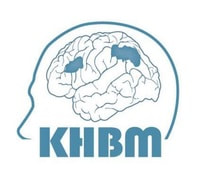

Our ultimate goal with this technology is to use data to understand how these networks of neurons work, and combine blocks of them together to make a realistic brain model. Or, by prodding them with electrical stimulation, you can record how they react and evolve and change over time. With those electrodes, you can record and listen to the electrical activity of those neurons while theyre growing. You can plate these dishes with, for example, clumps of 100,000 living neuronswhich can live for monthswhere the dishs electrodes are in direct contact with the bottom layer of neurons. Its essentially a cell-culture dish with a grid of electrodes on the bottom. What are they?Īn MEA dish is actually quite simple. Youre working with a technology that might help us circumvent this whole issue: microelectrode array dishes. RELATED: DARPA-Backed Wireless Implant Zaps Neurons to Fight Memory Loss. I mean, I could be completely wrong, and tomorrow someone could find some super important breakthrough, but if you look at the average rate of progress in this field, were still going to have plenty to learn over the next 20 or 30 years at least. Realistically, were a pretty long way away from understanding the biology of how these neurons connect and interact enough for an accurate model. Even though a lot of people try to just tweak these models to more closely match real neurons, the more you tweak, the further you get from any real understanding. But when you try to add more and more neurons, the system just breaks down and no longer acts anything like the neurons in the brain. Right now, with our best computer models, we can successfully model up to (roughly) 10,000 neurons, and that takes a very long time. In simple terms, we just dont understand all the variables that affect these neurons, and its impossible to accurately model what you simply dont understand. And for this issue, luckily, here we have companies like IBM that are spending millions and millions of dollars just trying to give the world more computing power.īut a big part of the problem is also our biological understanding. Well, its partially a computational barrier. So is the barrier just about computing power?


And dont forget, were talking about having to individually compute all those equations for all these variables for 100 billion neurons all at the same time.Įven if we ignored most of the complexity in the brain aside the fact that we dont have just one type of neuron, or if we assumed all the neurons are healthy, and so onthere isnt a supercomputer on earth that could create this type of theoretical model for anything close to even a million neurons over any realistic time period. Every single neuron has to be defined by a number of different variables, and each variable requires a set of differential equations to run. One issue is that modeling these neurons requires very computationally expensive math. A human brain is composed of roughly 100 billion neurons, and those form a very intricate but also incredibly dynamic network. There are a lot of projects that are trying to do just this, but you have to realize, the brain is by far the most complex system scientists have ever tried to understand. Whats keeping us from modeling a human brain, neuron by neuron, on a computer?


 0 kommentar(er)
0 kommentar(er)
